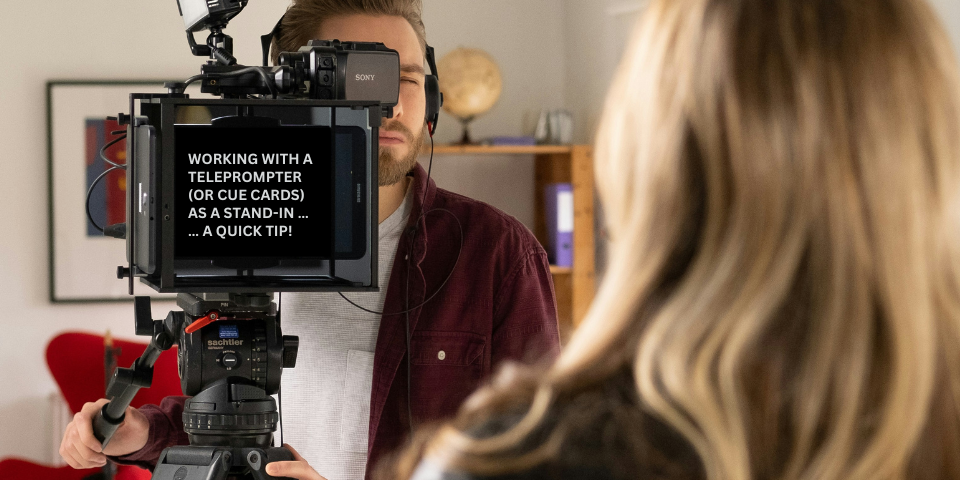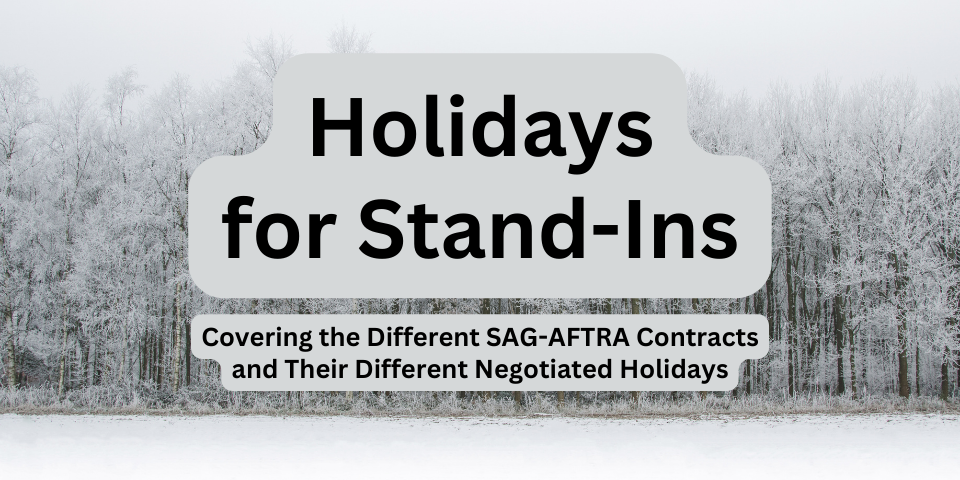On union holidays, union stand-ins are guaranteed holiday pay if they work on the production day before the holiday and the production day after the holiday. If they only work one of those two days, they do not qualify for holiday pay.
Many productions are kind to their core stand-ins and will have them work on both sides of the holiday. Qualifying for holiday pay means an additional check equal to one eight-hour day as a stand-in.
But some productions will get around cutting that extra check to stand-ins, and instead they’ll bring in other stand-ins on one side of the holiday. The effect is that the production gets around cutting the core stand-in an additional check.
While on the face of it, the practice seems to save the production money. But does it? After analyzing production costs, it may potentially be more costly for a production to bring in replacement stand-ins rather than core stand-ins when it comes to holidays.
Here are some arguments why productions should work core stand-ins around the holidays rather than bring in replacements.
Reason #1: Replacement Stand-Ins Are Sometimes Foreign to Standing In
Core stand-ins on a production know the drill. They know what is expected of them, and they probably know quite a deal about standing in.
All too often, when replacement stand-ins are sent to a production, the replacements are inexperienced at standing in. They do not know what is expected of them when it comes to standing in or they do not have enough set experience to do the job.
While certainly not all replacement stand-ins are this inadequate, it is a risk bringing in a replacement stand-in over a core stand-in because the replacement may not be as capable of doing the job, which then potentially becomes a liability to production on a demanding shoot day.
Dealing with such liability may mean spending valuable production time and energy on training the replacement stand-in how to do the job, when a core stand-in would not have used up such time or energy.
Reason #2: Replacement Stand-Ins Are Sometimes Foreign to the Production
Core stand-ins know who is who on the production, where to go for breakfast, where to go for color cover, where the sets are, etc.
All too often, replacement stand-ins have not been on a production before, so they have the potential of getting lost or not knowing where they need to be. In the event of showing up at the wrong location or in the wrong studio, production has to spend valuable time and energy tracking down the replacement stand-in when the core stand-in would likely know where to be and when.
Granted, sometimes replacement stand-ins have worked on the production before and are knowledgable of where things are and who’s who. But frequently this is not the case. And that risk is invited when bringing in a replacement stand-in over a core stand-in.
Reason #3: Holiday Pay Costs Less Than the Production Cost of Dealing with Replacement Stand-Ins
On a recent shoot, I asked the unit production manager (UPM) about production costs for a television episode. He said that the budget for a production day is about $250,000 (excluding the cost for “above the line talent,” like actors and writers). This $250,000 paid for crew labor and for rental equipment.
While it’s unclear if stand-ins are counted in this $250,000 or if they are considered “above the line,” this figure can help to determine the cost per minute of production time. If it costs $250,000 a day to shoot a television episode, and if the production day is assumed to be 12 hours long, that means that productions costs $347.22 per minute. (If that number strikes you as small, consider that ten minutes of production time costs $3,472.20.)
Now, holiday pay for a union stand-in on many dramatic television series is $189 (through June 30, 2017). The question becomes, Does it save production $189 by bringing in a replacement stand-in rather than bringing in a core stand-in around a holiday?
Given that replacement stand-ins are sometimes foreign to productions — and sometimes even foreign to standing in — there is the potential for replacement stand-ins to waste valuable production time in getting up to speed. All too often, inexperienced stand-ins show up late to set, get lost trying to find set, or need explicit training from production on how to do their jobs. Minutes lost because of replacement stand-ins can become expensive. For example, a stand-in who is simply one minute late to set, and because of whose lateness production cannot move forward, has cost the production $347.22 for that one minute of waiting.
Comparing the cost of that replacement stand-in with the cost of holiday pay for the core stand-in ($189), production likely would have saved $158.22 by bringing in the core stand-in because the core stand-in would unlikely have been late to set.
Granted, there is a lot assumed in the above, but the general point should be a strong argument for paying holiday pay to a core stand-in over going with a risky replacement stand-in: Core stand-ins tend to be more reliable to production and more experienced, keeping costs down. Replacement stand-ins tend to be less reliable to production and less experienced, and as a result may drive up costs.
Conclusion
The answer should be obvious now: Replacement stand-ins on the whole are risky for productions to bring on when trying to avoid holiday pay because if one isn’t as capable as a core stand-in, production may have to spend more money than $189 (the holiday pay check) to get that stand-in up to speed. In effect, the replacement stand-in does not save the production money but instead adds the risk of making the production more expensive around the holiday. A solid core stand-in reduces risk for the production and thereby keeps production costs more predictable.
Do you agree? Disagree? Or something else? On the whole, do core stand-ins save productions money around the holidays? Share our opinions below!






Leave A Comment